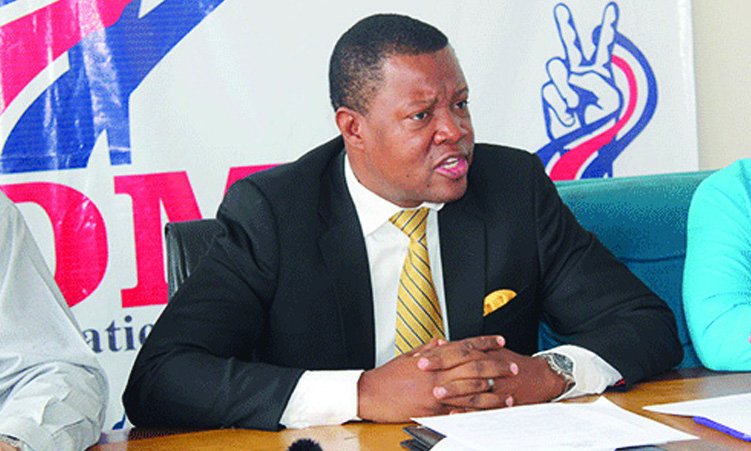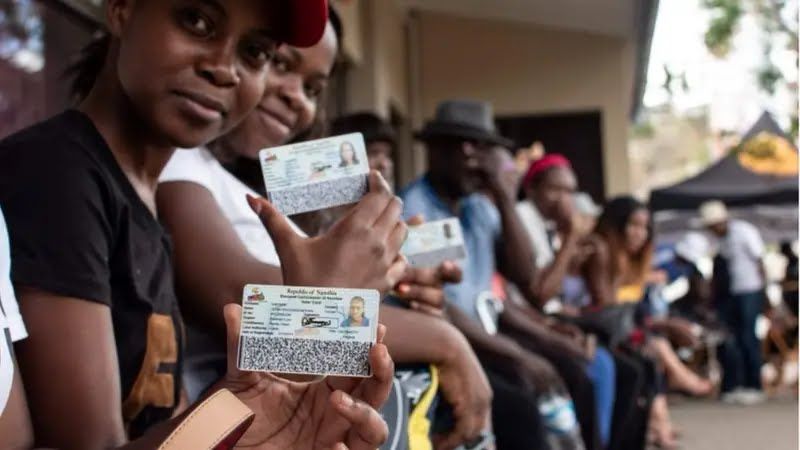Almost half of Namibia’s people will be faced with food insecurity between July and September this year, while the country has reported almost 2 000 cases of malnutrition.
This is according to the Office of the Prime Minister in its most recent drought situation report.
The report says 1,4 million Namibians will be food insecure between July and September, 33 105 marginalised community members are receiving drought-relief food, and 1 835 malnutrition cases have been recorded recently.
“About 1,4 million people (48% of the total population), equivalent to 341 855 households, are expected to be food insecure between July and September 2024,” the Office of the Prime Minister says.
Meanwhile, the government has formulated a N$1,3-billion drought-intervention programme for which it would need assistance to implement.
The government is able to provide N$829 million and needs N$482 million.
The //Kharas, Khomas, Omaheke, Omusati and Oshana regions are the five regions with reported cases of malnutrition.
The //Kharas region has the highest number of malnutrition cases, with 744.
The Omaheke region follows with 738 cases, and the Oshana has reported 176 cases.
The Khomas region recorded 111 malnutrition cases, and the Omusati region has 66 malnourished residents.
VULNERABLE PEOPLE PER REGION
The Kavango East and Omusati regions have the highest number of vulnerable households, with 42 000 and 41 469, respectively. This is out of populations of 39 907 and 72 437, respectively.
The Kunene region has 37 356 vulnerable families out of 28 188, while the Ohangwena region accounts for 35 180 out of 67 820.

RELIEF MEASURES
The government’s N$829 million will enable five measures, namely food assistance, livestock support, seed and horticulture provision, water provision, as well as health and nutrition.
Food assistance will cost just over N$1 billion, leaving a gap of N$439 million.
The N$1 billion for food assistance caters for a basket containing a 20kg bag of maize meal, four 400g tins of fish, soya mince, and one 750ml bottle of cooking oil.
This programme will run from 1 July until 30 June next year.
The livestock support programme and water provision would require N$100 million each.
The support programme, which started on 1 April, will end on 30 June 2025.
Seed and horticulture provision will cost N$25 million and will run from August.
Additional funding will be needed for health and nutrition, of which the budget is N$47,2 million.
The government requires N$42,3 million.
It is currently working on three water provision projects, namely the Onamantanga, Ohamaremba and Okanguati pipelines, as well as the Ozondati-Omatjete water supply scheme.
The agriculture ministry’s spokesperson Jona Musheko yesterday said the country has 3 800 tonnes of grain reserves available.
“Of this 3,6 tonnes are white maize, and the balance is mahangu,” he said.
DEVELOPMENT PARTNERS
Deputy prime minister John Mutorwa has gathered all heads of diplomatic missions and development partners to appeal for assistance with Namibia’s drought-relief efforts.
India has indicated it has requested its government to assist, while China says it is willing to provide N$5 million more in addition to its N$5 million food donation.
China has indicated it is also open to more assistance, such as setting up boreholes.
The European Union has presented its willingness to provide support on resilience building and water management.

MISMANAGEMENT
Popular Democratic Movement president McHenry Venaani has accused the government of trying to use drought-relief food for election campaigning purposes.
“People are smarter this time, we are telling them at rallies and everywhere that if you get the food, it is not Swapo food, it’s food that belongs to the people of Namibia,” he says.
“They have mismanaged the country’s food security. It’s misgovernance at its best,” he says.
Independent Patriots for Change national spokesperson Imms Nashinge says the statistics are alarming.
“Hunger has always been terrorising our people – during good rainy seasons, and in drought. The success of these efforts will depend on the government’s ability to manage and allocate the funds effectively,” he says.
He says the culture of growing mahangu, sorghum and maize alone is not enough.
Namibia Economic Freedom Fighters deputy president Kalimbo Iipumbu says these statistics highlight a significant challenge in ensuring food security and addressing malnutrition in Namibia, especially among marginalised communities.
“It’s crucial to not only provide short-term aid, but also to build long-term resilience against future droughts through water management strategies and agricultural diversification,” he says.
Iipumbu says transparency and accountability in fund allocation are essential to effectively addressing the crisis.
Landless People’s Movement spokesperson Lifalaza Simataa says: “Currently, we are hearing there is a lot of mismanagement of drought relief.”
‘POOR COORDINATION’
Gobabis municipality councillor Isak de Beer says most Namibians are not aware of interventions to alleviate the food crisis.
“A lot of people on the ground don’t know where to find food,” he says.
Speaking to Desert Radio yesterday, De Beer said food distribution is not done effectively.
Omaheke governor Pijoo Nganate says 300 cases of malnutrition have been reported in the region so far this year, with 26 people dying.
Some 45 people have died due to malnutrition during the same period last year.
Nganate told Desert Radio the region is introducing interventions such as soup kitchens to feed those in need.
He said many interventions are in the pipeline. “We are working on it,” he said.

CRISIS OR NOT?
Swapo secretary general Uahekua Herunga calls the situation in the Omaheke region a crisis.
He says the responsible office bearers should be held accountable.
“I am aware of the millions of dollars that has been allocated by the Office of the Prime Minister, so the resources are there, but the lack of coordination is something we must keep an eye on,” he says.
Meanwhile, the national general secretary of the IPC, Christine Aochamus, says: “It is really alarming to see the type of figures and the number of lives lost. I am just perturbed that by now we still don’t have a crisis declared in that region.”
Nganate, on the other hand, refused to call the situation a crisis.
“A crisis is when you don’t have any interventions and solutions and you don’t know what to do,” he said.
Omusati regional governor Erginus Endjala yesterday said he has not received data yet, but promised to liaise with the health directorate today.
He said the region has some nomadic people who were severely affected by the 2019 drought and malnutrition is a serious problem.
“We need to find out so we know which families are affected. Currently, the number of houses registered with us receive drought-relief food,” Endjala said.
He said the proposed basic income grant may be in conflict with already existing grants.
“This grant proposal is not so clear, unless an unemployment grant can be introduced to assist young people.”
Oshana chief regional officer Teopolina Hamutumwa yesterday said she has not officially received the Office of the Prime Minister’s data.
Stay informed with The Namibian – your source for credible journalism. Get in-depth reporting and opinions for
only N$85 a month. Invest in journalism, invest in democracy –
Subscribe Now!






